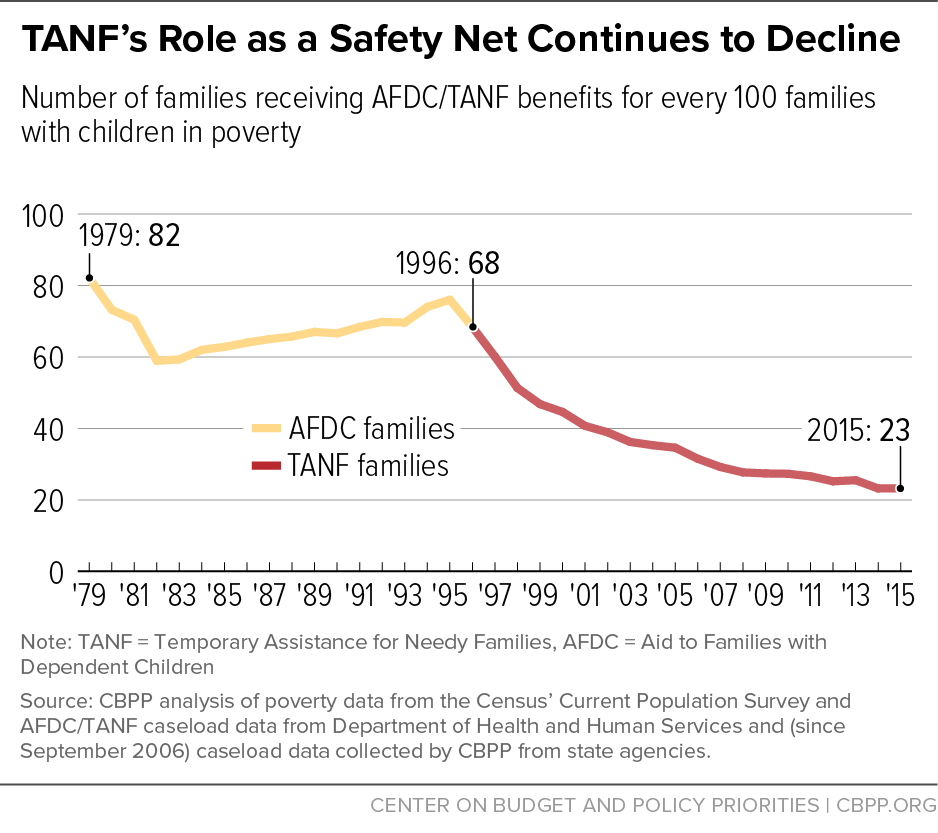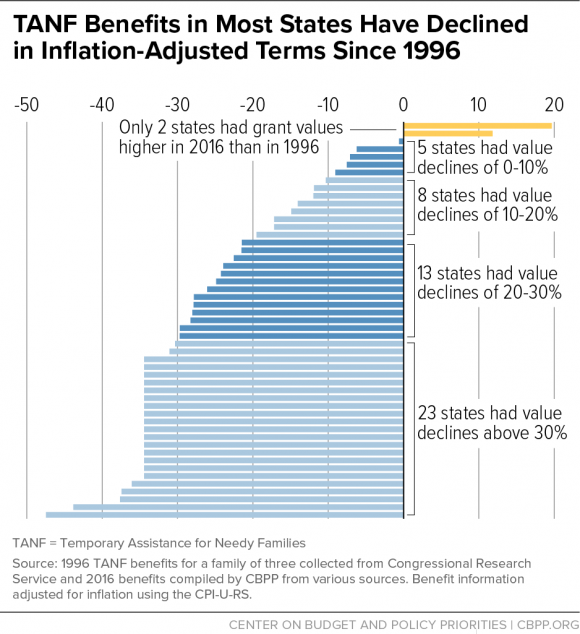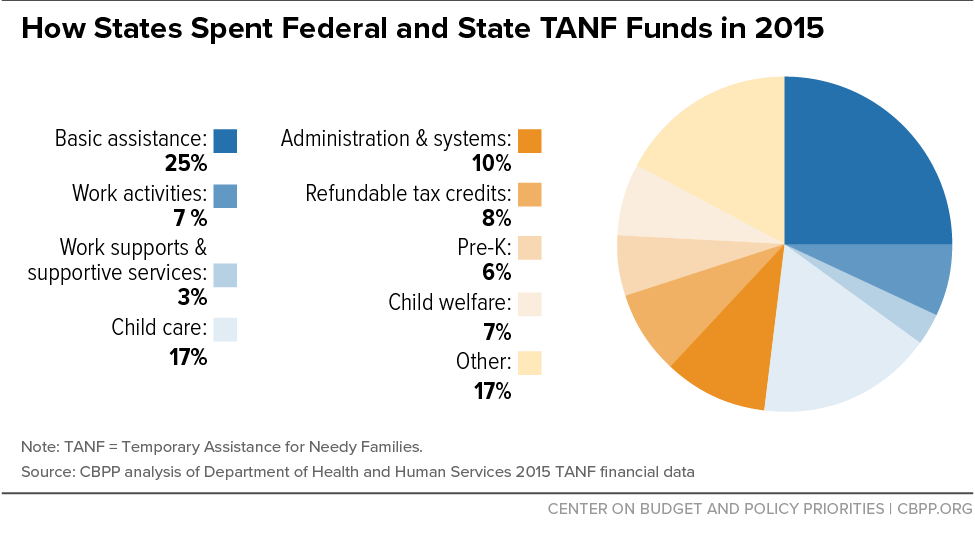BEYOND THE NUMBERS
We’ve issued policy briefs on three key issues regarding the Temporary Assistance for Needy Families (TANF) block grant: whether it reaches most poor families, whether benefits give them adequate help to meet basic needs, and whether state TANF spending focuses on core welfare reform areas. Unfortunately, TANF falls short in all three areas, providing compelling evidence of why block grants shouldn’t be considered a model for other programs.
Policy Brief: TANF Reaching Few Poor Families. The TANF block grant, created by the 1996 welfare law, provides a temporary safety net to few poor families — including those with no other means to meet basic needs — and its reach has shrunk considerably over time. In 2015, for every 100 families in poverty, only 23 received cash assistance from TANF — down from 68 families when TANF was first enacted. This “TANF-to-poverty ratio” reached its lowest point in 2014 and remained there in 2015. . . .
Policy Brief: TANF Cash Benefits Are Too Low to Help Families Meet Basic Needs. A core purpose of TANF is to provide families that have fallen on hard economic times with cash assistance to help them meet basic needs. But TANF benefit levels are low and have eroded in value since TANF’s creation in 1996. As of July 2016, benefits for a family of three with no other income:
-
Are below half of the poverty line in every state.
-
Have lost at least 20 percent of their inflation-adjusted value since 1996 in most states.
-
Don’t meet the rent and utility costs of a modest two-bedroom apartment in any state.
States have considerable flexibility in how they use their TANF funds, and many have diverted those funds to other areas as caseloads have declined rather than investing them in helping families to meet basic needs. States should halt the erosion of TANF benefits and begin restoring the purchasing power lost over the past 20 years. . . .
Policy Brief: How States Use Funds Under the TANF Block Grant. States spend only half of their combined federal and state dollars under TANF on the core welfare reform areas of basic assistance for families with children, child care for low-income families, and work-related activities or supports. A handful of states spend less than 20 percent of their TANF funds on these areas. These figures point out fundamental flaws with the TANF block grant, which gives states great flexibility in using the funds. A look at how states spend TANF funds provides compelling evidence on why basic safety net programs should not be block-granted.



